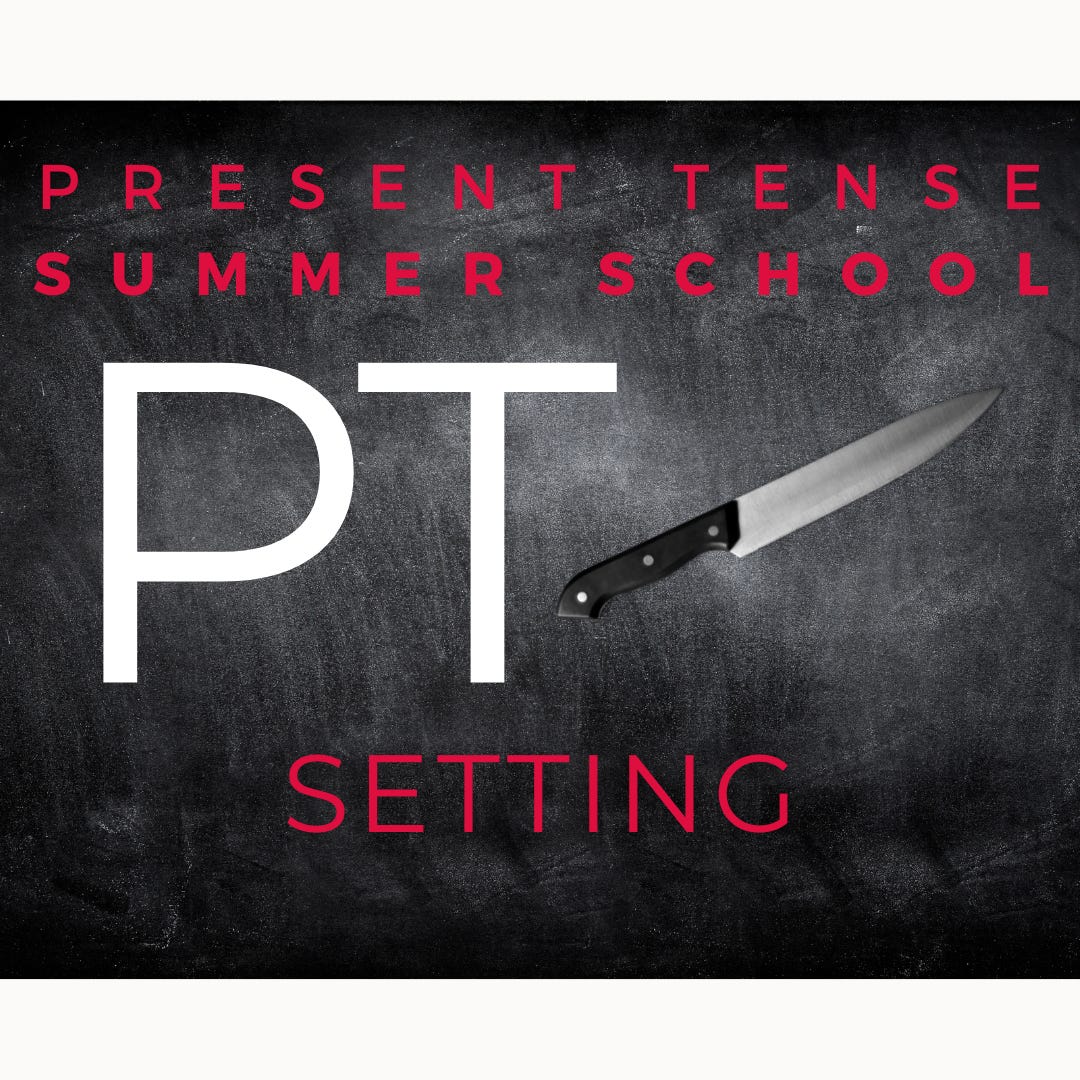If you missed the first three weeks, here they are:
Genre: Leaning into genre, discovering your genre by accident, and watching TV/movies to dissect genre differences.
Character: “Auditioning” characters, what makes characters feel real.
Voice: What it means, how to develop it.
Coming later: Tension, Containment, Theme, Twists.
Can we ask you a favor? Please share, re-stack, and/or mention this series in Notes if you’re so inclined. We’d love to reach more readers!
Week 4: Setting
If I could provide advice on how to write a mystery, thriller, or suspense novel more easily, it would be this:
Second-best tip: Restrict duration as much as possible for more tension and greater ease in plotting. (Aristotle recommended this.)
Best tip: Choose an evocative and meaningful setting.
Setting can do so much work in terms of establishing atmosphere, interest, tension, theme, and more. In the case of my first suspense novel, The Deepest Lake, setting the book in one isolated and vivid setting, volcano-circled Lake Atitlan, Guatemala, made the book so much easier to write than its unfinished predecessor, an apprentice suspense novel in multiple locations in Canada and Italy.
(Quick ad break: The Deepest Lake ebook is currently on sale for $1.99. Blink and you’ll miss it!)
Note that I didn’t say the setting made the book better. I said it made it easier to write. (And better.) Setting itself helps generate plotlines, scenes, obstacles, conflicts. Pick the right, highly specifc setting and your job as a novelist is halfway done! (Okay. Maybe a quarter of the way done.) But seriously. This is one aspect of craft well worth brainstorming for a while before committing yourself to a humdrum locale or even worse, multiple humdrum locales.
I’ve tried to keep that setting lesson in mind, though it can be hard to pick a unique and important setting for every plot. Sometimes, for story reasons, we want a more “typical” or “relatable” suburb or city, but I can’t wait until I’m further into one of my next projects, where the setting is again more unique, narrowly defined, and thematically key.
In the meanwhile, setting isn’t just about a place, writ large. It’s also the smaller details of the place. In the case of Tana French’s The Witch Elm, a specific house is important, but even more so is its garden (what we North Americans call a backyard), and even more important than that is one specific tree!
Your Turn:
What’s the last crime-related book you read in which the setting did lots of extra work, and how did it do so? (Psst, I’m currently reading The Manor House by Gilly Macmillan, set on the grounds of a place called Lancaut Manor, in Gloucestershire. The story could not begin to exist without two very interesting neighboring houses, one historical and one ultramodern, a custom-built, high-tech “Glass House.” )
Is there a setting you know particularly well that you haven’t yet used in your work?
Is there a setting you don’t know well yet but would LOVE to use as foundation for a novel? (TRAVEL RESEARCH IS DEDUCTIBLE, FRIENDS!)
Just as it can help to restrict a book’s timeline to build intensity, so it can help to make the most of a specific, small place. If you’re used to thinking of setting as a town, go smaller. How to make the most of a house or other building, or some underutilized natural feature?
Andromeda Romano-Lax is the author of seven novels, including The Deepest Lake, a Barnes & Noble Monthly Pick and Amazon Editor’s Choice, and the forthcoming What Boys Learn, available for pre-order and on NetGalley. Andromeda and Caitlin Wahrer co-created this newsletter in order to share their love of the craft and community aspects of suspense writing.


